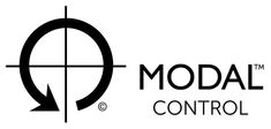For predator populations, 'r' is the driver of population growth and must be reduced if compensatory mortality is to be become additive and control is to be successful. Pest and predator control focuses on reducing the population size of a target pest or predator species. As a result it falls within the realm of population dynamics and to place this into context it is useful to consider some more of this interesting subject. The size of any population is governed by the relative contributions of only four key factors. These are birth rate, also known as natality, death rate or mortality, immigration and emigration. Natality and immigration add individuals to the population whereas mortality and emigration remove them. Therefore to reduce a population, control must elevate mortality above natality and if possible also reduce or stop immigration.  Population ecologists have formulas for projecting the future size of a population using its current size, it's population growth rate and time. Within this formula, ‘r’ is the population growth rate and needs to become less than one, and preferably a negative number, if the future population size is to be lower than the current population size. For the mathematical inclined the population growth formula is P(t) = P(0) x e^(r x t). This formula is an exponential function and produces the characteristic 'J’ shaped growth curve that illustrates the very rapid population growth rate that ecologists refer to as an irruption. Many pests and predators are also described as being 'r-selected’ species as they have particular breeding characteristics including:
With these breeding characteristics and good breeding conditions a pest or predator population can increase very rapidly and can quickly cause damage. Intuition tells us that reducing the population size will reduce the damage caused and to a point this is correct. However, the second and third points in the list above can cause difficulties as there is a further characteristic of populations that needs to be considered and this is 'additive’ versus 'compensatory’ mortality. Compensatory mortality means that population control measures may simply remove individuals that would die anyway, and although immediate damage may be reduced the population may still retain its ability to increase rapidly. Population control needs to target additive mortality as this adds to natural mortality and provides a meaningful reduction in population size. It is additive mortality that can turn 'r’ into a negative number and lead to a sustained reduction in pest and predator populations. When controlling pests and predators it is necessary to look beyond simple statistics such as catch rates and the numbers of trapped animals. Getting to grips with 'r’ is the only way that a population of pests or predators can be reduced and kept under control. The alternative is to face a continual tidal wave of pests and predators that requires huge resources to push back against for little more than immediate relief. Comments are closed.
|
What's in a Name?The familiar saying "A bird in the hand is worth two in the bush" warns about the risks that come with trying to achieve more by challenging the status quo. Categories
All
Archives
January 2022
|
|
Copyright © Synovus Technology 2018 - 2023
All Rights Reserved |

 RSS Feed
RSS Feed
